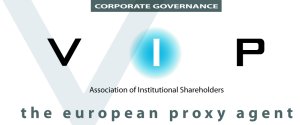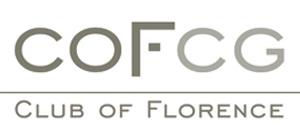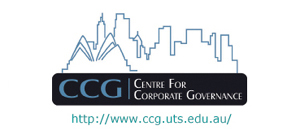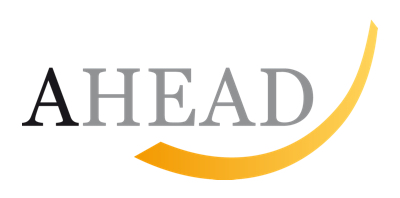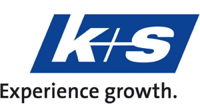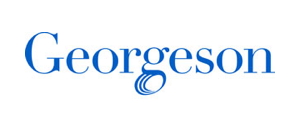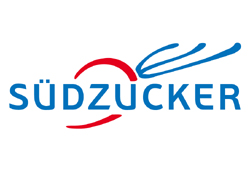VIPsight International
VIPsight America - Mexico
22 December 2013
Correlation of forces in the Corporate Governance
The current government has presented a series of structural reforms (educational, financial, agricultural, energy, political), of which there are still some that are about to be adopted by senators and deputies and that have caused great controversy in Mexico. While some groups insist that these reforms will be catastrophic for the country, other submits that will be beneficial.
The groups that are against the reforms that have been submitted are the political parties of the left as they are: the Labor Party (PT, by its Spanish acronym for Partido del Trabajo) and its leader Alberto Anaya, the Party of the Democratic Revolution (PRD, by its Spanish acronym for Partido de la Revolución Democrática) and its leader Jesus Zambrano, the Citizen Movement (MC, by its Spanish acronym for Movimiento Ciudadano) and its leader Dante Delgado and the Movement National Regeneration (MORENA, by its Spanish acronym for MOvimiento REgenaración NAcional), and its leader Martí Batres as well as its spiritual leader Andres López (it should be noted that this last individual has contents to the Presidency of the Mexican Republic on two occasions and have not been able to win). In addition to the above are the members of the National Coordinator of Education Workers (CNTE, by its Spanish acronym for Coordinadora Nacional de Trabajadores de la Educación) which was created on December 17th, 1979, and it is precisely in these moments that meet 34 years are at a sit that has been going on for several months in protest of the reforms listed above but on all of the education. All of them contend that the structural reforms will bring more disadvantages and less competitiveness to Mexico, the consequences are devastating in all the senses, political, economic and social.
However, despite the above, there are many other groups were in favor of structural reforms, an example is Victor Gonzalez, who is the President of the National Governing Council of the Mexican Institute of Finance Executives (IMEF, by its Spanish acronym for Instituto Mexicano de Ejecutivos de Finanzas, A.C.), which says that with the approval of reforms Mexico will have an accelerated growth of the 5 and 6 percent, as well as greater attraction of investments and that it will generate 1.5 million jobs that the country needs. At the same time, the president of the National Committee of Economic Studies of the IMEF Federico Rubli mentions that the inflationary effect of the reforms only will be reflected in a principle of the implementation of these, but in the coming months will be diluting as well as the Bank of Mexico must make use of the tools of monetary policy to reduce this inflationary effect that could be presented.
With the above, in my humble opinion do not believe that what mention the IMEF is entirely correct. Each of the structural reforms has its positive points, but to revise them in greater depth in each one of them will have more negative points that could make your implementation is directed more toward the negative side the positive. In addition, all makes it appear that what is happening is what is called the Correlation of Forces.
A colleague of mine, Victor Sanchez, spoke to me for the first time a few weeks ago on the Correlation of Forces, which can be defined as the relations of power and strength that each of the groups in power can exert to achieve their goals, whatever, but that if in favor of its cause, in addition, these groups of power could generate positive or negative things for society as a whole. As well the power is understood as a relationship of forces in the domain of a given society and can be understood as the ability to exercise an action to obtain objectives on the part of that group of power.
We can guess that “Where there is power there is resistance” by what leads to the so-called Correlation of Forces, due to the confrontation in the pursuit of the goals of the power groups originate from both the resistance as the use of power to counteract to the opposing party, already that should be considered the mutual relationship of confrontation and struggle as well as the relationship of the domain of a group on the other.
This entire situation is happening in the macroeconomic and social environment of Mexico, the resistance is the left while the group in power that is represented by the government give rise to all this conflagration that live in these days.
If the above situation is given at the social level, I have a question, the Correlation of Forces will not occur into a company? That is to say, there will be groups of internal power that make the company work or not in a way harmonious?
Obviously, the search for the answer to these questions we can tell that it was precisely because the alignment to the interests and objectives of a company are achieved with efficient mechanisms of Corporate Governance that since the time of Berle and Means (1932) passing through the theories of the firm of Fame (1980) (Nobel prize awarded in 2013). In 1976 Michael Jensen and William Meckling wrote about the theory of the firm, where applied the theory of agencies on modern corporations. These authors formally modeled problem principal-agent, finding that cost is incurred due to the conflict of interests between managers and owners. By what each group of internal power have its own objectives, which sought to achieve at any cost. These authors showed that an administrator, which does not have absolutely nothing of rights on the cash flow of the firm, has a potential conflict of interest with the shareholders of the company. Since then the financial economists have worked to understand, define, measure, and minimize such conflicts of agencies; or more precisely, to minimize its negative impact on the value of the firm.
With all of the above, makes me think that my colleague Victor Sanchez to the mention of the term Correlation of Forces was fortuitous for our talk of that time, but that has been widely applied in the company through the Corporate Governance and its control mechanisms both internal and external. It is worth mentioning that each of the companies use to Corporate Governance in a different way and I have also found that for each of the companies have a different meaning, however, the result is the same, the alignment of the objectives of each of the group in power that coexist in a company. It would be possible in a medium-term all firms have the same concept on the Corporate Governance? We will have to see…
VIPsight Europe - France
15 December 2013
French banks prefer conflicts of interests and shame than reforms
While the Governor of the Bank of France boasted in July 2012 that no French bank was involved in the interest rates manipulation scandal, Société Générale has just been fined for 446 million euros by the E.C. Competition Authorities. In the same inquiry a procedure has been initiated against Crédit Agricole.
Yet the dispute chapter page 259-261 of the Annual Report of Société Générale ! for the 2012 General provisionnait € 300 million in other cases , said not a word of this investigation by the competition services of the European Commission ( nor folders educated by the AMF and since then has given conviction) ...
Note that the more transparent Crédit Agricole who has not been convicted to date, recognized him having " received requests for information from various authorities in the context of investigations concerning both the determining of intereste rates on several currencies and an certain other market indices, and other operations related to these rates and indices. "
To our knowledge the Financial Markets Authority (AMF) instrcuted no inuqiry in this area and the French government is so addicted to debt that he is quite far to meet its legal obligations as a supervisor of French banks.
But there is not always bad news , the appointment by the Chairman of the National Assembly, Claude Bartolone (PS ) of Thierry Philipponnat, CEO of the Finance Watch NGO , to serve on the panel of the AMF, is clearly good news for investors and shareholders.
This former manager of Amnesty International, also a former banker of BFCE, Exane Paris, UBS and BNP Paribas is General Secretary of Finance Watch, a non -governmental organization specializing in "financial regulation for the service of companies and the real economy, not speculation."
The AMF College is the main decision-making body of the french markets authority AMF . It comprises 16 members (including the chairman , Gérard Rameix, a former member of Proxinvest Consulative Committte. The members of the College term of office is of five years, renewable once . The AMF College is renewed by half every thirty months.
VIPsight Europe - Italy
17. December 2013
Telecom Italia 2013 EGM: the unusual proxy fight (not) to gain the control
Introduction
On December 20th, the shareholders of the main Italian telecommunication company, Telecom Italia, will be called to vote on the removal of all Board members. The meeting has been called upon the request of the relevant shareholder Findim SA (5%), an investment vehicle created by Mr. Marco Fossati, who strongly contests the clear conflicts of interest of Telecom Italia’s major shareholder, Telco SpA (22.4%).
The background
Telco is a holding company built in 2007, at the sole scope to acquire the relative majority of Telecom Italia, currently owned by the Spanish telecommunication company Telefonica SA and by the Italian financial companies Assicurazioni Generali SpA, Intesa Sanpaolo SpA and Mediobanca SpA. On September 24th, 2013, Telefonica increased its holdings in Telco, through the subscription of new Telco’s non-voting shares, which may be converted into voting shares starting from January 2014. Following the eventual conversion, Telefonica will control 66% of Telco’s voting share capital, Generali 19.32%, Intesa Sanpaolo and Mediobanca 7.34% each. As per Telco’s shareholder agreement, Telefonica has an option to further increase its holdings in Telco, up to 100%. The CEO of Telefonica, Mr. Cesar Izuel Alierta, as well as the COO Mr. Julio Linares Lopez, sit on the Board of Telecom Italia since 2007.
The two telecommunication companies are competitors on the Brazilian market, through Telecom Italia’s TIM Brazil and Telefonica’s Vivo. Hence, the acquisition by Telefonica of the effective control of Telecom Italia is subject to the approval of the Brazilian Antitrust Regulator (CADE), which recently communicated to Telefonica that any direct or indirect financial interests in TIM Brazil shall be ceased.
Mr. Fossati's reasons
The clear conflicts of interest of Telefonica in Telecom Italia have been strongly contested by Mr. Fossati starting from 2010, when Telefonica acquired the control of the Brazilian Vivo. The growth of Telefonica’s holdings in Telco even strengthened Mr. Fossati’s concerns: Telecom Italia may be forced to quickly sell TIM Brazil at sub-optimal conditions, as he believes it already happened in November, when the Company sold all its holdings of Telecom Argentina to Fintech Group.
Serious concerns also arose over the recent issue of mandatory convertible bonds reserved to qualified investors. On November 7th, the Board approved the issue of € 1.3 billion convertible bonds 6.125%, due November 2016, which were fully allocated through an accelerated book-building procedure. The Company gave priority treatment in the allocation process to three institutions, among which Telefonica, that subscribed 7.9% of the issue. Two independent Board members (Ms. Lucia Calvosa and Mr. Luigi Zingales) opposed the issue and the Italian Market Authority (Consob) has been investigating over the procedures activated by the Company, as well as over the sale of Telecom Argentina.
In order to eliminate any possible conflicts of interest, the dissident shareholder decided to ask the removal of all Telecom Italia’s Board members that were appointed by Telco (all Directors except the independent member Mr. Luigi Zingales, who was appointed by a group of fund managers). To strengthen his position, Mr. Fossati drafted an alternative strategic plan for Telecom Italia, that was presented to institutional investors on November 6th in London, and that is based on the following key points: to create partnerships with international operators (e.g. with Vivendi's GVT in Brazil), to issue € 2 billion convertible bonds, to sell the subsidiary Telecom Italia Media and some properties, not to pay dividends for one year and to defer the sale of TIM Brazil.
The unusual proxy fight
If the December 20th General Meeting will approve the removal of the current Board members, the new Directors shall be appointed through slates of nominees submitted by shareholders holding more than 1% of the share capital. According to Telecom Italia’s bylaws, 80% of the Board members will be appointed from the list obtaining the majority of votes, regardless the actual number of votes gathered, while remaining 20% will be appointed from the eventual other lists.
Only two slates of nominees have been submitted so far: by the major shareholder Telco (including 3 nominees) and by a group of fund managers coordinated by the Italian association Assogestioni (including 7 nominees). Although having requested the removal of the Board and having drafted a strategic plan for the Company, Mr. Fossati decided not to submit a list of candidates for the eventual renewal. As he thought that the Assogestioni’s list would have gathered the large majority of institutional investors’ votes, Mr. Fossati found it more convenient to support their candidates. Nevertheless, according to the Assogestioni’s internal rules, the Directors appointed from their lists of candidates cannot represent the majority of the Board members and cannot hold executive positions into the Company. Furthermore, as per the Company’s bylaws, the Board can be made of a minimum of 7 up to a maximum of 19 members. The Meeting will fix the number of members upon eventual shareholders’ proposals. In case no proposal will be submitted to the Meeting, the number of Directors will remain unchanged to current 15 (as fixed by the AGM held on 2011). So far, neither Telco nor Assogestioni proposed a number of Board members.
The oddity of this unusual proxy fight is that, in case the Board will be removed, none of the contenders wants to gain the control of the Company: Assogestioni because of their internal regulations, Telco because their representatives were removed from the Board. All candidates submitted by Assogestioni are strictly independent from the Company (including the two current members Ms. Calvosa and Mr. Zingales), while Telco’s list includes the current CEO Mr. Marco Patuano and Telefonica’s COO Mr. Linares Lopez, both removed by the shareholders. Of course, in case of removal, Mr. Patuano shall not be charged of executive powers.
In case of removal, who will implement Mr. Fossati’s strategic plan? Who will manage the Company? And who will chair the Board? But questions are even more basic: how many directors will be appointed? Assogestioni submitted 7 candidates, being sure that Telco had submitted 15 candidates, but it did not happen. Unless different proposals are submitted at the Meeting, all 10 nominees will be elected and 5 missing Directors shall be appointed. Who will appoint the missing members? Telco is the only one that has the power to appoint them at the Meeting, through individual nominations, but does Telco really want to integrate the missing directors to re-gain the control of the Board? In that case nothing would really change, but a higher number of independent members would be elected. Nonetheless, Telco may decide to leave the responsibility to Mr. Fossati, who won the battle but has no representatives on the Board.
It should also be noted that even some of the subscribers of the Assogestioni’s slate are not strictly independent from Telco’s shareholders: Eurizon and Fideuram are part of Intesa Sanpaolo's group, Mediolanum and UniCredit's Pioneer are linked to the shareholders agreement controlling Mediobanca.
Despite the concerns of Mr. Fossati over the clear conflicts of interest of Telefonica are absolutely sharable, not submitting any candidates for the eventual renewal contributed to create a huge uncertainty in case of removal of the current Board members. Telecom Italia has to face a very delicate situation: a very high net debt (amounting to € 28 billion, or 1.4 times the shareholders’ equity, as per the 3rd Edition Report), poor operating performances on the domestic market, both Moody’s and Standard & Poor’s recently downgraded the Company to a sub-investment grade and Italian political and financial contexts are still highly turbulent. In a so delicate situation, it is clear that the Company should strongly avoid further uncertainty.
Several newspapers reported that both ISS and Glass Lewis recommended approving the Board removal. Although supporting Mr. Fossati’s reasons, ECGS recommended (proxy reports issued on December 4th) and still recommends opposition, as the concerns over the huge uncertainty deriving from the removal overwhelm the risks of Telefonica’s conflicts of interest. Approximately 50% of the share capital is expected to vote at the Meeting, of which 22.4% represented by Telco, 5% by Fossati’s Findim and approximately 23% by independent shareholders. Hence, it is impossible to predict the outcomes of the Meeting.
Further obstacles to the shareholders' vote
The problems for shareholders are not limited to the decision whether to support Mr. Fossati or not, as great confusion was also created by Telecom Italia itself, that published inconsistent meeting material: the Notice of Meeting includes a different number of resolutions respect to the proxy card published by the Company itself!
The Notice of Meeting includes 5 resolutions: 1) the removal of the Board, 2) the eventual appointment of the new Board (in case the removal is approved), 3) the eventual integration of 2 Board members (in case the removal is rejected), 4) the elimination of shares’ par value and 5) the share capital increase to serve the mandatory convertible bonds. In case the removal is approved, shareholders will have to appoint the new Board members, having previously defined the number of members, the term of office and the remuneration of the new members. Hence, as per the Notice of Meeting, item 2 and 3 include bundled resolutions. But the bundled resolutions are unbundled on the proxy card, still issued by the Company, that includes 9 items: 1) removal, 2) eventual definition of the number of Directors, 3) eventual definition of the term of office, 4) eventual definition of the remuneration, 5) eventual election of the Board members, 6) eventual appointment of one Board member, 7) eventual appointment of the second Board member, 8) elimination of shares’ par value, 9) share capital increase.
The crazy situation affected also the major voting platform, which is based on the notifications received by the local custodians. Foreign institutional investors found 6 resolutions to be voted! While item 2 is still bundled, item 3 correctly allows shareholders to separately vote for the eventual appointment of each missing director.
At a time when proxy advisers’ activities are strongly criticized, it would be highly recommendable that national and supranational market Authorities cast a glance on the correctness of the entire voting channel, that involves also the issuers (and their advisers), the custodians, the voting platforms and the proxy agents.
VIPsight Europe - Switzerland
10 December 2013
Ethos and the Committee on Workers Capital have launched Global Proxy Review 2013
Ethos and the Global Unions Committee on Workers Capital (CWC) announce the launch of Global Proxy Review 2013, a report and interactive website that encourages investors to take an active role in proxy voting oversight for global equity portfolios.
The votes profiled in the report encompass ESG issues at companies in 15 economic sectors. They include votes held at multinational corporations such as: Wal-Mart, News Corporation, Barrick Gold, Heineken, Standard Bank, Telefonica, UBS and Glencore-Xstrata. Approximately one third of the votes selected related to executive compensation, reflecting a continued preoccupation toward excessive executive pay one year after the ‘shareholder spring’ of 2012. National regulatory contexts are also evolving to facilitate active ownership by shareholders; ‘say-on-pay’ votes are now mandatory in all countries featured in the report except Canada and the results are binding in Australia, the Netherlands, the UK (starting in October 2013) and will become binding by 2015 in Switzerland. In addition to governance issues, the votes profiled also include significant social issues such as reporting on human rights related risks.

